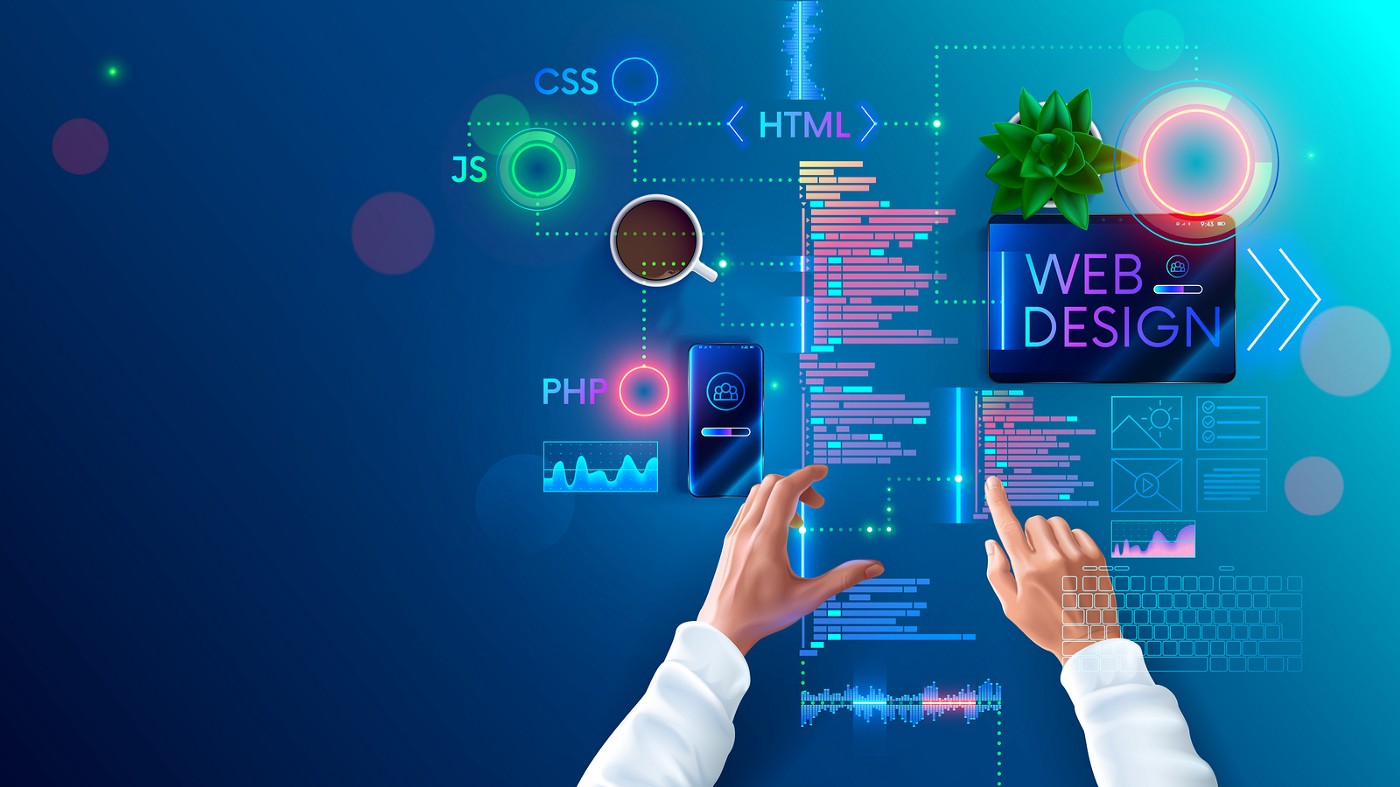All Categories
Featured
Table of Contents
- – Web Design Definition - Techterms Tips and Tri...
- – Web Design - Website Design Tutorials, Articl...
- – Web Design Services By Freelance Website Desi...
- – What Is Web Design, How To Do It Right And Be...
- – Web Design Ledger: Homepage Tips and Tricks:
- – Responsive Design Best Practices - Google Sea...
- – Otc Web Design Girdwood, Alaska - Web Design...
- – Web Design - Website Design Tutorials, Artic...
- – Web Page Design: A Comprehensive Guide - Ado...
- – Why Web Design Is Dead - - Ux Magazine Tips ...
- – Siteinspire - Web Design Inspiration Tips an...
Web Design Definition - Techterms Tips and Tricks:
Quick summary Functionality and the energy, not the visual style, identify the success or failure of a website. Considering that the visitor of the page is the only person who clicks the mouse and for that reason chooses whatever, user-centric design has established as a basic technique for effective and profit-oriented web style - web design frederick md.
and the energy, not the visual style, identify the success or failure of a website. Considering that the visitor of the page is the only person who clicks the mouse and for that reason chooses whatever, user-centric design has actually become a standard approach for effective and profit-oriented website design. After all, if users can't use a feature, it might too not exist.
g. where the search box must be positioned) as it has already been done in a variety of articles; rather we concentrate on the approaches which, used effectively, can cause more advanced style decisions and simplify the procedure of perceiving presented information. Please see that you may be interested in the usability-related short articles we've published before: Concepts Of Good Site Design And Efficient Website Design Standards, In order to use the principles correctly we first require to comprehend how users communicate with websites, how they think and what are the fundamental patterns of users' behavior.
Web Design - Website Design Tutorials, Articles And Free Stuff Tips and Tricks:
Visitors look at each new page, scan some of the text, and click on the first link that catches their interest or slightly looks like the thing they're trying to find. There are large parts of the page they do not even look at. The majority of users search for something intriguing (or beneficial) and clickable; as quickly as some appealing prospects are found, users click.
If a page offers users with premium material, they are ready to compromise the material with advertisements and the style of the site. This is the reason not-that-well-designed sites with top quality material gain a great deal of traffic over years. Material is more vital than the style which supports it.

Users don't read, they scan. Notice how "hot" areas abrupt in the middle of sentences. This is normal for the scanning process. Really simple principle: If a site isn't able to fulfill users' expectations, then designer failed to get his task done appropriately and the company loses cash. The higher is the cognitive load and the less user-friendly is the navigation, the more ready are users to leave the website and search for options.
Web Design Services By Freelance Website Designers - Fiverr Tips and Tricks:
Neither do they scan web page in a linear style, going sequentially from one site area to another one. Rather users satisfice; they pick the very first sensible option. As quickly as they discover a link that looks like it might cause the objective, there is an excellent possibility that it will be right away clicked.
It doesn't matter to us if we comprehend how things work, as long as we can use them. If your audience is going to imitate you're developing billboard, then design great signboards." Users wish to have the ability to control their browser and count on the constant information discussion throughout the website.
If the navigation and site architecture aren't instinctive, the number of question marks grows and makes it harder for users to comprehend how the system works and how to get from point A to point B. A clear structure, moderate visual clues and easily identifiable links can assist users to discover their path to their aim.
What Is Web Design, How To Do It Right And Best Skills - Rock ... Tips and Tricks:

Considering that users tend to check out websites according to the "F"-pattern, these 3 declarations would be the very first components users will see on the page once it is packed. The style itself is simple and instinctive, to understand what the page is about the user needs to search for the answer.
Once you have actually achieved this, you can interact why the system works and how users can take advantage of it. People won't use your web site if they can't discover their method around it. 2. Do Not Waste Users' Perseverance, In every task when you are going to offer your visitors some service or tool, attempt to keep your user requirements minimal.
Novice visitors want to, not filling long web forms for an account they might never ever use in the future. Let users check out the site and find your services without forcing them into sharing personal data. It's not affordable to force users to get in an email address to evaluate the function.
Web Design Ledger: Homepage Tips and Tricks:
And that's what you want your users to feel on your web website. The registration can be done in less than 30 seconds as the form has horizontal orientation, the user doesn't even require to scroll the page.
A user registration alone is adequate of an impediment to user navigation to minimize incoming traffic. 3. Handle To Focus Users' Attention, As websites offer both fixed and vibrant content, some aspects of the interface draw in attention more than others do. Obviously, images are more eye-catching than the text simply as the sentences marked as strong are more appealing than plain text.
Focusing users' attention to particular locations of the site with a moderate usage of visual elements can assist your visitors to get from point A to point B without thinking of how it really is supposed to be done. The less question marks visitors have, the they have and the more trust they can develop towards the business the website represents.
Responsive Design Best Practices - Google Search Central Tips and Tricks:
Aim For Function Direct exposure, Modern web styles are usually criticized due to their method of directing users with visually appealing 1-2-3-done-steps, large buttons with visual effects etc. From the design point of view these elements actually aren't a bad thing.
The website has 9 main navigation choices which show up at the first glimpse. The option of colors might be too light. is an essential principle of effective user interface style. It does not truly matter how this is attained. What matters is that the content is well-understood and visitors feel comfortable with the method they connect with the system.
com gets directly to the point. No cute words, no overemphasized statements. Instead a rate: just what visitors are looking for. An optimum service for efficient writing is touse brief and succinct phrases (come to the point as quickly as possible), usage scannable layout (categorize the material, utilize numerous heading levels, utilize visual elements and bulleted lists which break the flow of consistent text blocks), usage plain and unbiased language (a promo doesn't need to seem like ad; provide your users some sensible and unbiased reason they ought to use your service or remain on your website)6.
Otc Web Design Girdwood, Alaska - Web Design & Google ... Tips and Tricks:
Users are rarely on a site to take pleasure in the style; additionally, in many cases they are searching for the information despite the design - web design frederick md. Make every effort for simpleness instead of intricacy. From the visitors' viewpoint, the finest site style is a pure text, without any advertisements or additional material obstructs matching exactly the query visitors used or the material they have actually been searching for.
Finch plainly presents the details about the site and offers visitors an option of choices without overcrowding them with unneeded content. 7. Don't Be Scared Of The White Area, Actually it's actually difficult to overestimate the importance of white space. Not only does it help to for the visitors, however it makes it possible to perceive the info presented on the screen.
Complex structures are more difficult to read, scan, evaluate and deal with. If you have the choice between separating two design sectors by a noticeable line or by some whitespace, it's usually better to utilize the whitespace solution. (Simon's Law): the much better you handle to supply users with a sense of visual hierarchy, the easier your material will be to perceive.
Web Design - Website Design Tutorials, Articles And Free Stuff Tips and Tricks:
The very same conventions and guidelines must be used to all elements.: do the most with the least amount of cues and visual components. Clearness: all parts ought to be designed so their significance is not ambiguous.
Conventions Are Our Good friends, Conventional design of site aspects does not lead to a boring web website. In fact, as they reduce the learning curve, the requirement to find out how things work. It would be an usability nightmare if all sites had various visual discussion of RSS-feeds. That's not that various from our routine life where we tend to get utilized to fundamental principles of how we organize data (folders) or do shopping (placement of products).
comprehend what they're anticipating from a website navigation, text structure, search placement etc. A case in point from use sessions is to equate the page in Japanese (assuming your web users don't understand Japanese, e. g. with Babelfish) and provide your use testers with a job to discover something in the page of different language.
Web Page Design: A Comprehensive Guide - Adobe Xd Ideas Tips and Tricks:
Test Early, Test Frequently, This so-called TETO-principle should be used to every web style job as usability tests often offer into significant issues and concerns related to an offered layout. Test not too late, not too little and not for the wrong factors.
Some crucial points to bear in mind: according to Steve Krug, and screening one user early in the project is much better than testing 50 near the end. Accoring to Boehm's first law, errors are most frequent throughout requirements and design activities and are the more costly the later on they are removed.
That indicates that you create something, test it, repair it and then evaluate it again. There may be issues which have not been discovered throughout the preliminary as users were virtually obstructed by other problems. functionality tests. Either you'll be pointed to the problems you have or you'll be pointed to the absence of major design defects which is in both cases a beneficial insight for your project.
Why Web Design Is Dead - - Ux Magazine Tips and Tricks:

This holds for designers. After you've worked on a website for few weeks, you can't observe it from a fresh point of view any longer. You know how it is built and therefore you know precisely how it works you have the knowledge independent testers and visitors of your site wouldn't have.
It can be linked to other locations such as graphic design, user experience, and multimedia arts, but is more appropriately seen from a technological viewpoint. It has ended up being a large part of people's daily lives. It is tough to think of the Internet without animated graphics, various styles of typography, background, videos and music.

During 1991 to 1993 the Web was born. Text-only pages might be seen using a simple line-mode browser. In 1993 Marc Andreessen and Eric Bina, developed the Mosaic internet browser. At the time there were multiple web browsers, nevertheless most of them were Unix-based and naturally text heavy. There had been no integrated method to graphic style elements such as images or sounds.
Siteinspire - Web Design Inspiration Tips and Tricks:
The W3C was produced in October 1994 to "lead the Web to its full potential by developing common protocols that promote its development and guarantee its interoperability." This prevented any one business from monopolizing a propriety internet browser and programs language, which might have altered the result of the World Wide Web as a whole.
As this has taken place the innovation of the web has likewise moved on. There have likewise been substantial modifications in the way people utilize and access the web, and this has altered how websites are created.
Learn more about Lovell Media Group LLC or TrainACETable of Contents
- – Web Design Definition - Techterms Tips and Tri...
- – Web Design - Website Design Tutorials, Articl...
- – Web Design Services By Freelance Website Desi...
- – What Is Web Design, How To Do It Right And Be...
- – Web Design Ledger: Homepage Tips and Tricks:
- – Responsive Design Best Practices - Google Sea...
- – Otc Web Design Girdwood, Alaska - Web Design...
- – Web Design - Website Design Tutorials, Artic...
- – Web Page Design: A Comprehensive Guide - Ado...
- – Why Web Design Is Dead - - Ux Magazine Tips ...
- – Siteinspire - Web Design Inspiration Tips an...
Latest Posts
Web Design And Development - Invision Tips and Tricks:
Web Design Icon:
Web Design Studio & Digital Marketing Agency • Gravitate Tips and Tricks:
More
Latest Posts
Web Design And Development - Invision Tips and Tricks:
Web Design Icon:
Web Design Studio & Digital Marketing Agency • Gravitate Tips and Tricks: